Interview with UCA Baum Gallery Director Brian Young
Brian Young is director of the Baum Gallery at the University of Central Arkansas in Conway. He is also an instructor in the Department of Art & Design. Brian has over 25 years of experience in the museum biz, with most of that time spent as curator at prestigious museums in Michigan, Maryland, and the Arkansas Arts Center, now called the Arkansas Museum of Fine Arts. So, along with his vast experience, Brian’s connections in the art world bring works by national artists to the Baum Gallery, which makes Baum an even more valuable resource for students, faculty and the public.
AAS: Where are you from originally and how did you end up in Arkansas?
BY: I am originally from a suburb of Detroit called Warren, Michigan. It is a blue-collar town. My dad was a printer; my mom a homemaker. Typically, people from Warren do not immerse themselves in Renaissance painting and Baroque sculpture. Yet, I went to the University of Michigan in Ann Arbor. While there I began as a work-study employee at the University of Michigan Museum of Art. Surprisingly to me at that time, my parents supported my art history degree. They continued to support me when I wanted to study in Florence. I remember how afraid I was to ask their permission to apply; they had never been outside the country except to nearby Canada. Yet, I have no recollection of any push back; I still cry on average once a year or so reflecting back. After my undergraduate degree in art history, I have never looked back with any regret. After graduation, I went to Ohio State University for an MA in Art History. While serving as a TA there, I began work at the Columbus Museum of Art training docents, working in membership, filling in for special events, and then as a Registrar. Essentially in the latter I worked on condition reports, data entry, managing the collection, rights and reproduction, print projects, handling art, etc. I loved that job, but it was all behind the scenes. I wanted to be a curator.
AAS: You have been a collections curator for universities and museums for many many years. How did you get started in this field?
Esther before Ahasuerus by Guercino (Giovanni Francesco Barbieri)
BY: While I loved Columbus (and Ann Arbor), but like I said I really wanted to be a curator. While I had a good idea what that entailed having worked in the curatorial department at the Columbus Museum of Art, I didn’t realize how budget oriented it would be.
I would often read trade publications to look for curatorial openings. And that is how I found out about the opening at the then Arkansas Arts Center. I was single and so I applied. That was in 1997. I had never been to Arkansas and could not recall anyone I knew who had even visited. I thought the interview would be a free trip at the least. Instead, I was interviewed by Townsend Wolfe and a few others. I was really impressed with the collection of works by Odilon Redon, Diego Rivera, Van Gogh, Baroque artist Guercino, etc. In fact, they have a drawing study for my favorite work at the University of Michigan Museum, Guercino’s Esther Before Ahasuerus from the 17th century. Anyway, they offered me the job and I took it.
I quickly realized that the Board of Trustees and Townsend Wolfe had very strong concerns about running a deficit. I also discovered the odd world of grant writing. Overtime, it became clear that being a curator was a combination of art gatherer and administrator.
AAS: How long were you at the Arkansas Arts Center, now AMFA? What were some of the highlights of your tenure?
BY: I was there as the Curator of Drawings and Exhibitions for 8.5 years. Highlights in terms of exhibitions included Dale Chihuly: Installations in 2000, Art and the White House: Presidential Selections, 1960-2000, in 2004, to coincide with the Clinton Library opening, Pursuing Picasso in 2006, and French Drawings and Watercolors from Staten Museum for Kunst. Lastly, Nan Plummer let me take over the National Drawing Invitational (twice), which was Townsend’s baby until he retired around 2001 or so.
Of course, another amazing aspect of the job was travel for the Collectors Show & Sale to New York City every year. And then, the Collectors Group trips to San Francisco, Miami, Paris, New Orleans, Chicago, etc. For a curator, an art-centered trip is the best!
Other highlights were making recommendations about buying drawings including a John Marin in the late 1990s, Mary Cassatt, the Master E.S., Elaine de Kooning, Hoon Kwak, Robert Bechtle, another Guercino (!), Luis Jimenez, Robert Cottingham, Thomas Moran, Gustaf Lundberg, Bernardino Lanino, Claude Lorrain, Sharon Louden, Howardena Pindell, and so many others.
While I love the, now, Arkansas Museum of Fine Arts, I left in 2006 to pursue a job at Cranbrook Art Museum which has a different kind of collection and focus. They are focused on contemporary art including architecture, design, and the work of their alumni and faculty. Cranbrook Educational Community is an amazing campus with buildings by Eliel Saarinen, Tod Williams and Billie Tsien, Albert Kahn, Rafael Moneo, and others. Plus, they have an MFA program, so the number of creative faculty that live on campus is well over a dozen. Cranbrook remains a hothouse of innovation and creativity. But then the U.S. economy cratered about 18 months after I was hired. I was simply laid off. That led to 10 years in Maryland including jobs at the Academy Art Museum in Easton and the University of Maryland Global College (then UMUC).
AAS: Let’s talk more about the Baum Gallery. How did you get the position as director, and what is your mission and the mission of the gallery?
BY: Around 2015, my wife Molly Deere and I decided that we wanted our two young kids to be surrounded by family as they grew up. Well, Molly is from Sheridan and Little Rock and so that was the destination. Then she was offered a position at Stephens Inc. that was too good to pass up. We moved back and I was a stay-at-home dad. I started an appraisal business and worked remotely for Johns Hopkins Medical Institutions where I was a curator of cultural property for about a year. Then the job at the Baum opened up. So, I applied and began in August 2016. In addition to being its director, I am also a lecturer in the Art & Design department. I teach Museum Studies, Art Appreciation, and Portfolio III: Professional Practice for Artists.
My mission and my mandate are to serve the students of UCA, the Art & Design department and the UCA family of faculty and staff. Luckily my bosses do not require me to do shows that are popular, in a Dale Chihuly-like sense. I do not have to serve to the public’s interest like the Arkansas Museum of Fine Arts or MoMA in New York City. Rather, we want to inspire our student body with the work being created today. As a result, we really don’t do historic shows of say 18th century Japanese woodblocks or the Hudson River School or architectural design. We do work to inspire our BA and BFA students in all media relevant to our programming. I also work with the Chair of the Art & Design department, Prof. Bryan Massey, Sr. and the Exhibitions Committee. They provide guidance, insight into their fields, and a prospective different than mine.
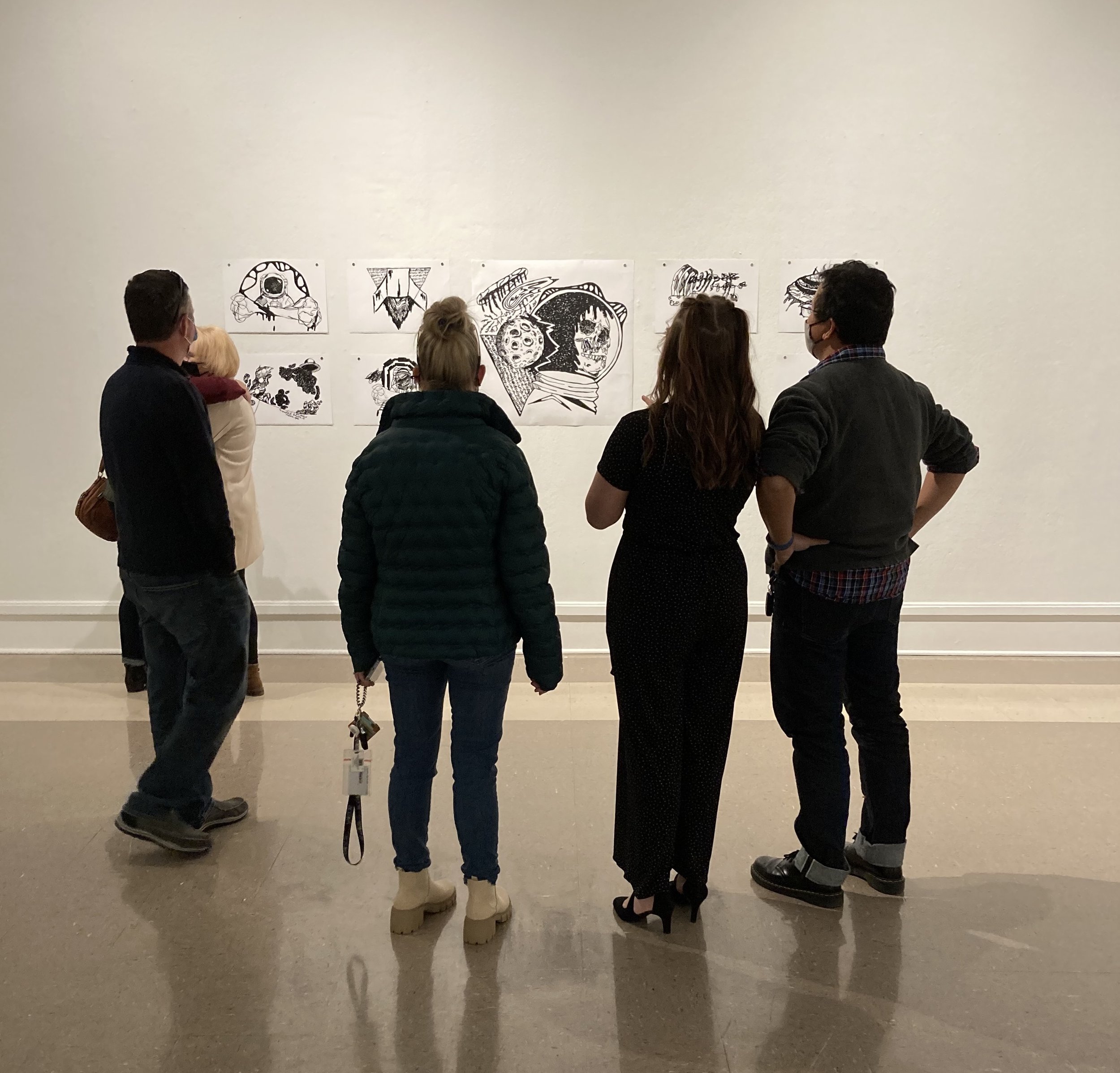
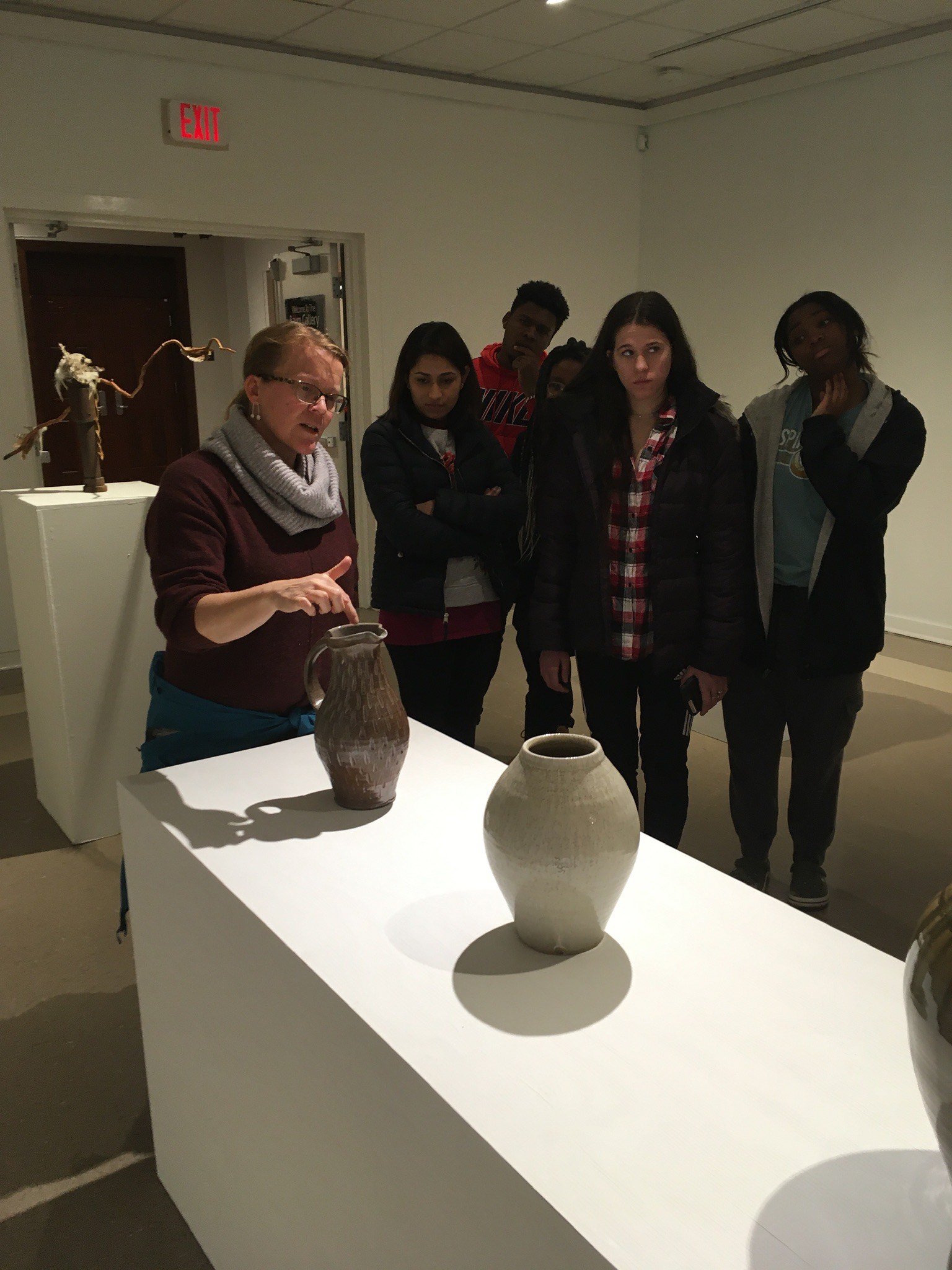
AAS: How is the Baum Gallery supported?
BY: The Baum is supported by student art fees; every UCA student pays them. I also get support from the College of Art Humanities and the Social Sciences, the Art & Design department, the UCA Foundation, and from endowed funds. The Conway CVB (Chamber of Commerce) is also supportive. That stated, my budget is modest. Surprising to some, the Baum will not be part of the new Windgate Center for the Fine and Performing Arts. In part, this is because the four galleries are over 4,000 square feet plus storage and a work area. That would take up a great deal of space to duplicate what we already have. The administration, therefore, thought it would be best to use the space to keep all of our art department studios and classrooms and faculty in one building. It was also clear that our music facilities needed an upgrade more than the Baum. However, they are going to have a small gallery for student critiques, faculty displays, and other modest shows. This will be run by my colleague Sylvia Stewart. While it would have been exciting to be in the new building, I have grown to like the concept that in addition to the Windgate building, we have a museum on top of that. In that sense, UCA’s cultural footprint is even larger.
AAS: What is the permanent collection like?
BY: Growing. About two years ago we received a gift of 11 historic photographs from Gerald and Penelope Stiebel including Charles White, Edward Weston, Henri-Cartier Bresson, Julia Margaret Cameron and others. We have also have a nice contemporary print collection including John Baeder, Julian Stanczak, Larry Zox, etc. Then there are paintings and works on paper by Louis and Elsie Freund. There are also pieces by faculty and alumni including Bryan Massey, Morton Brown, Lily Kuonen, and others. While the collection is not often on view except in offices, people can make an appointment with me if they want to see something. Unfortunately, I do not have the space to let people just come into storage and look around.
AAS: The Baum is a venue for student work as well as outside artists. How do you decide on exhibitions?
BY: We do about 7 exhibitions per year: two for the BA and BFA students in the Spring and Fall; an Annual Student Art Competitive; a major show in the Fall and then a major outside show in the Spring; and a summer show. And then we might squeeze something in as a request from faculty. The “major shows” are almost always in the media we teach: painting, fiber, ceramics, printmaking, etc. I also focus on artists who make their living as a creative: faculty in a university setting; an artist like Stephen Driver or Joe Bruhin who have their own kilns; or an artist like Rena Detrixhe who sells work, does Artist in Residencies, etc. Sharon Louden who is the Director of Visual Arts at Chautauqua currently has an outdoor installation on campus near the library. Our last exhibition, Painting was on view in January and February 2022. It exemplifies what the Baum does: 1) it is contemporary; 2) it featured artists who make their living as painters including Tessa Davidson and Lisa Krannichfeld plus national figures like Joan Waltemath, who teaches at the Maryland Institute College of Art (MICA); 3) we had different techniques and various approaches. We had oils, mixed media, collage, acrylic, watercolor, etc. If one of our students wanted to purse painting further, this was a perfect cross-section of what painters are doing today.
Jesse On The Rocks, photograph by CIg Harvey
As for the future, our next show is our spring BA BFA exhibition it runs April 7 through April 28, 2022. In the fall we are featuring the photographs of Cig Harvey plus one of her video projections. After that, I am working with Holly Laws to come up with a sculpture show not unlike the painting show: contemporary, innovative, various approaches and media, etc. The procedure is that Holly and I will work together and then present our proposal to the Chair and the Exhibitions Committee which is made up a few faculty members from the Art & Design department.
AAS: Tell me about Threads Through Time and Say Something. There were some amazing pieces in those shows.
BY: Threads was a show to celebrate the anniversary of Suffrage granting some women the right to vote. It was co-curated with Sue Bennett and we focused on women who used fiber, a typically female-centric medium. So, I got Rena Detrixhe to do a dirt rug. Yes, a non-functioning and stunning work made from red dirt in Oklahoma. It was breathtaking! This show had Holly Laws, works from Historic Arkansas Museum and Old State House Museum, Liz Koerner, Deborah Kuster, Rachel Laws, and so on.
Say Something was about art as protest. We had Lizzo’s dress from a national award show that said, “Vote” all over it (should have used that for Threads. . . ). We also had reconstituted (counterfeit) MAGA hats that were carefully dismantled and reformed into a hat that was conical and highly suggestive of a KKK hood. Kate Kretz was the mastermind behind that. There was James Matthews’ Eviction Quilt. So powerful. Donna Pinckley’s photographs of interracial marriage. Melvarue Abraham’s paintings on the struggle of African Americans in the south. And there was another fiber piece that drew attention to the rising rates of military suicides. Unfortunately, because of Covid the attendance was low.
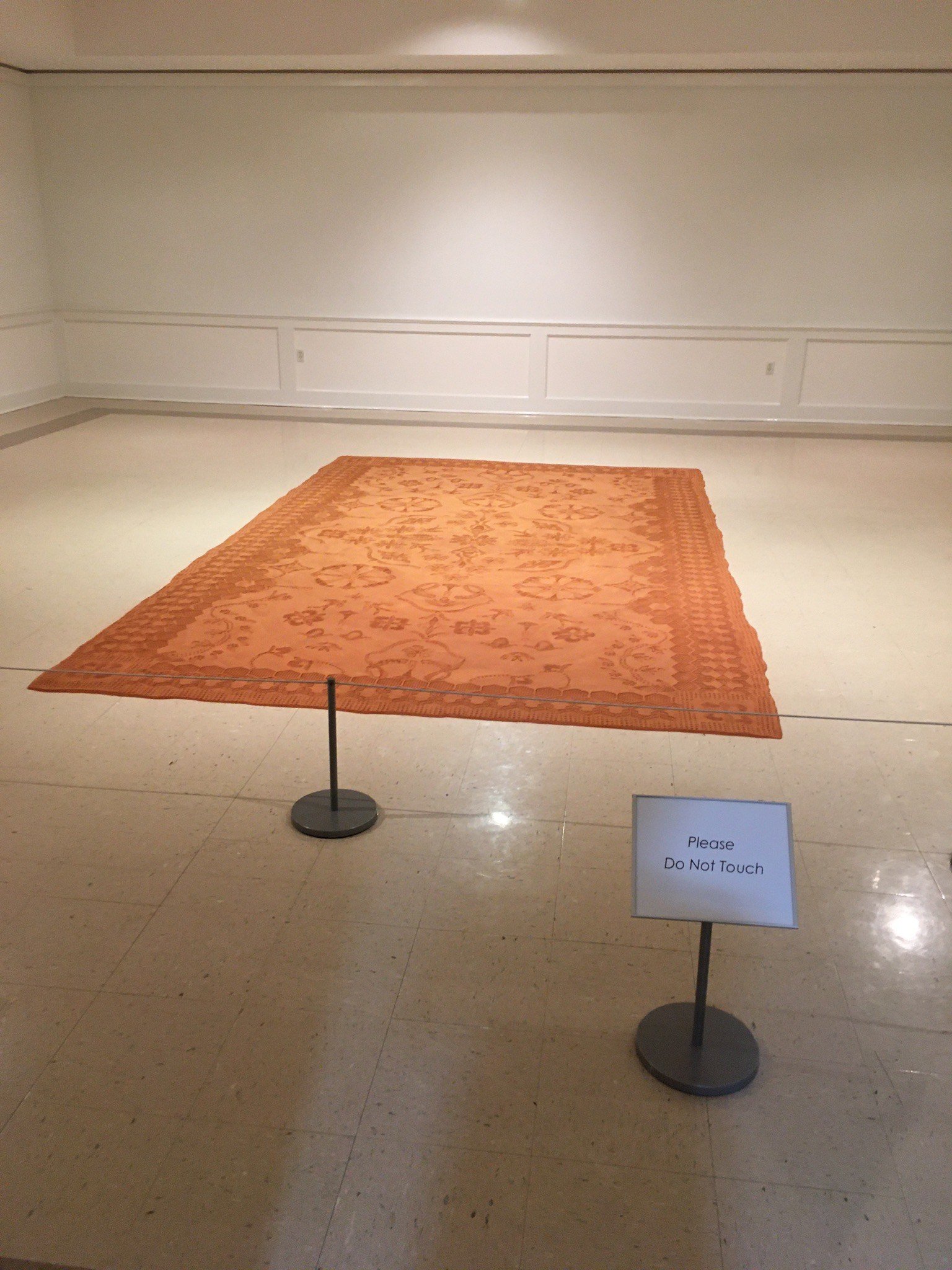

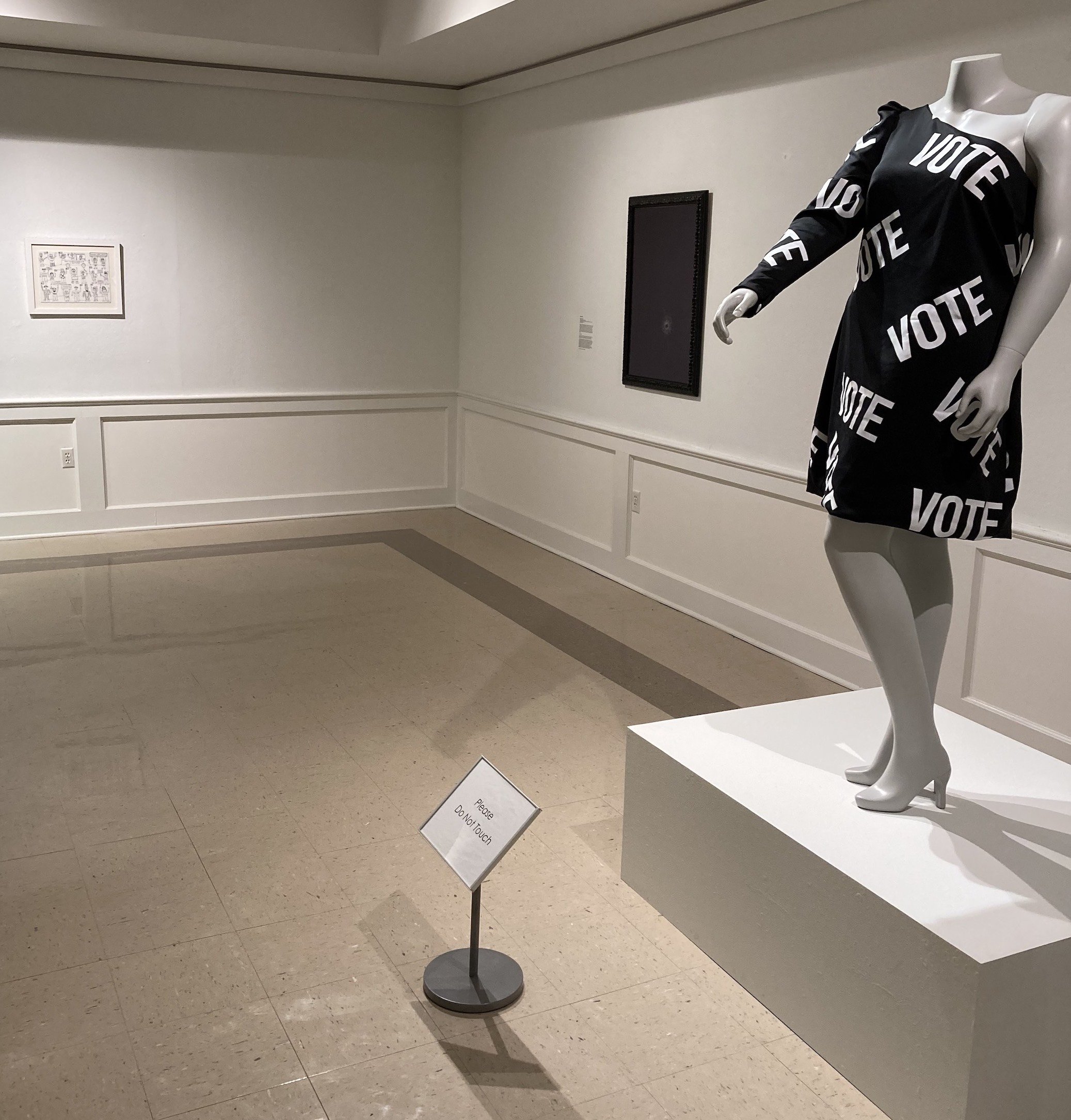
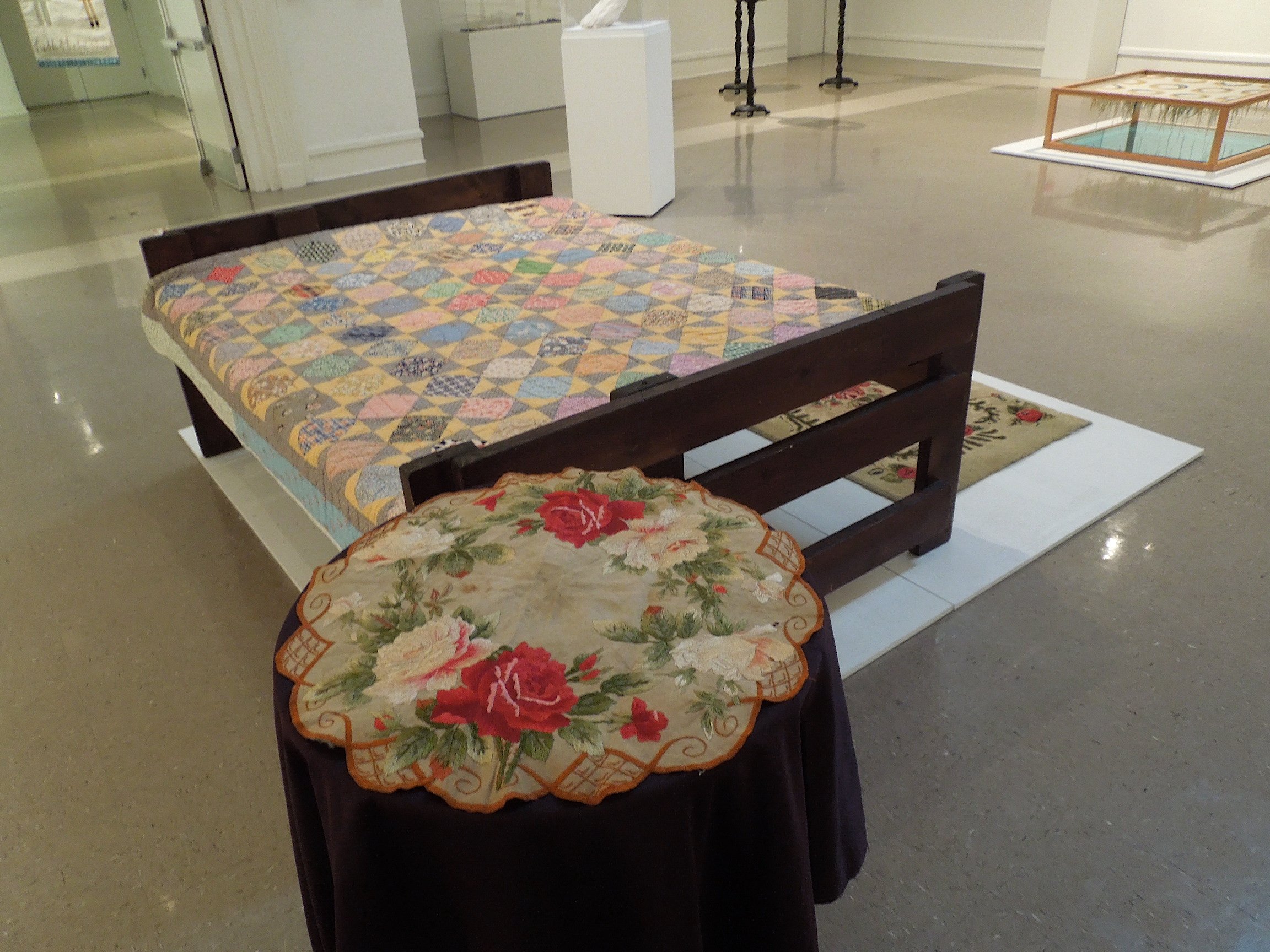
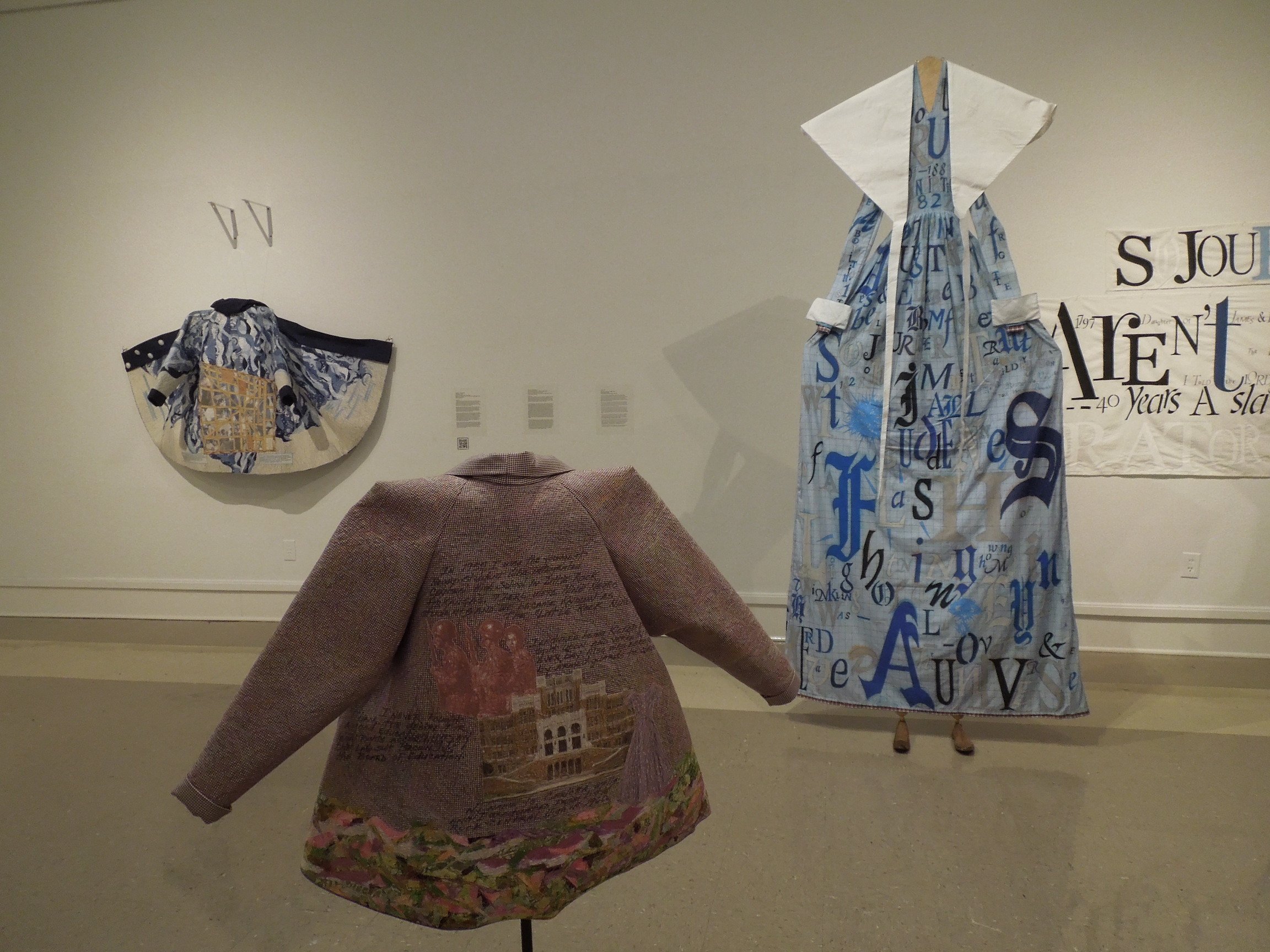
AAS: Are you an artist yourself, Brian?
BY: I am not an artist. The University of Michigan had a long (perhaps outdated) history of making their art history approach very academic. No need to develop photographs if you are going to learn about Titian and Giotto. . . as it were. I do collect however.
AAS: What are the favorite pieces in your collection?
Susanna and the Elders, engraving, Conrad Goltzius, 1587
BY: The first piece I ever purchased was Susanna and the Elders, an engraving by Conraad Goltzius (1587), and so it remains a sentimental favorite. My favorite, maybe hands down, is by an artist that I bet know none of your readers know. I have a minimalist drawing by Michael Harrigan. He lives in Trappe Maryland and I did a modest show for him at the Academy Art Museum. Maybe Brad Cushman (UALR) has heard of him because they both went to Cranbrook Art Academy (as did Townsend Wolfe), which I mentioned earlier. I also was gifted two 16th century drawings from my Graduate Advisor, Prof. Francis L. Richardson. He told me he wanted me to have them so I drove from Little Rock to Columbus where he handed them to me. He was in poor health and I told him how much they meant. He died less than two weeks later. So, I have a strong emotional connection to those works especially because drawings are my specialty.
AAS: You are an art appraiser as well. How did you get started in that field?
BY: The only job I was ever laid off from was in fact Cranbrook. My wife wisely stated I should get a plan B. So over time, she encouraged me to get an art appraisal certificate from NYU. I sped up the process when I moved back to Arkansas without full-time prospects. While I REALLY enjoy doing them, Jennifer Carman should not get too worried.
AAS: Who is your favorite artist and why?
BY: Artemisia Gentileschi is a feminist art-celebre, as she should be. BUT, some scholars downplay, in my view, her most feminist quality: she hired professional male artists including Viviano Codazzi, Domenico Gargiulo and Bernard Cavallino in the 17th century to finish the unimportant, non-figural parts of her complex compositions. But, she was also a magnificent painting who still had to play the patronage game. She could teach anyone that you still have to act professional no matter how well you paint and who you know. She was a consummate professional who would win over support of important patrons including Cardinals, Dukes, etc.
Then there is Caravaggio. Thirty-five years after hearing his name. I remain in awe as to his pioneering influence on 17th century, Italian Baroque painting. His Calling of St. Matthew in Rome might be my favorite art experience of all time. Not the Sistine Ceiling. Not the Mona Lisa. By the way, the fact that Caravaggio committed murder does not change my opinion of his work.
AAS: In 2018 you were a Juror of the 60th Delta Exhibition. What was that experience like and what advice do you have for artists thinking about entering a regional juried show?
BY: The experience was nostalgic and amazing! I co-juried with Les Christensen, and Shea Hembrey. We had so much fun and it kindled the passion for why we love our jobs. However, I have to admit it was difficult to sort through so many great entries. I think there were around 1400 (!) works entered for jurying. We ultimately selected 52 works by 46 artists. I will let your audience into a bit of naivety on my part. Because the jurying is done without artist identification, we ended up rejecting work by our colleagues. I subsequently found out that we rejected colleagues from the Arkansas Arts Center, UCA, UALR, and so on. That was unexpected and slightly discomforting for me. But we tried to put together the best show for the AAC.
Why are juried shows so important for artists? This is how I got to know James Matthews, Lisa Krannichfeld, Anais Dasse, Aaron Calvert, and Tessa Davidson. All are artists from this show whose works were subsequently shown at the Baum. The grand award winner was Lisa Krannichfeld, an artist that was in Painting this winter. I mean that is how it works. Getting into juried shows is a great way to gain exposure and press. Earlier Deltas were the way that I got to know the work of Sammy Peters, David Bailin, Warren Criswell, and so on. And to paraphrase Prof. Bryan Massey of the UCA Art Department, this is part of the deal if you want to be an artist. Get used to rejection.


